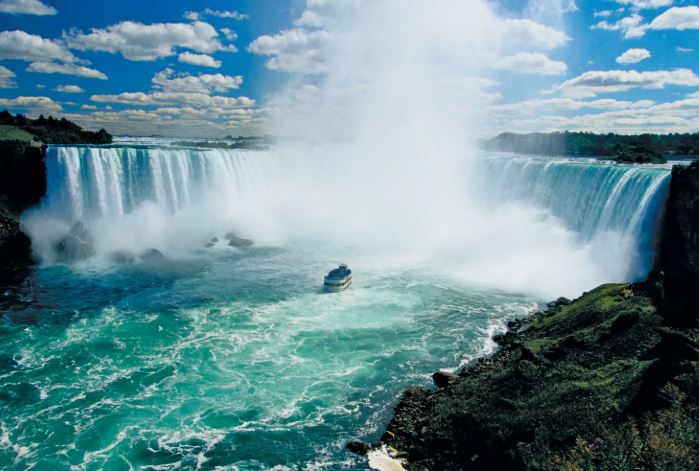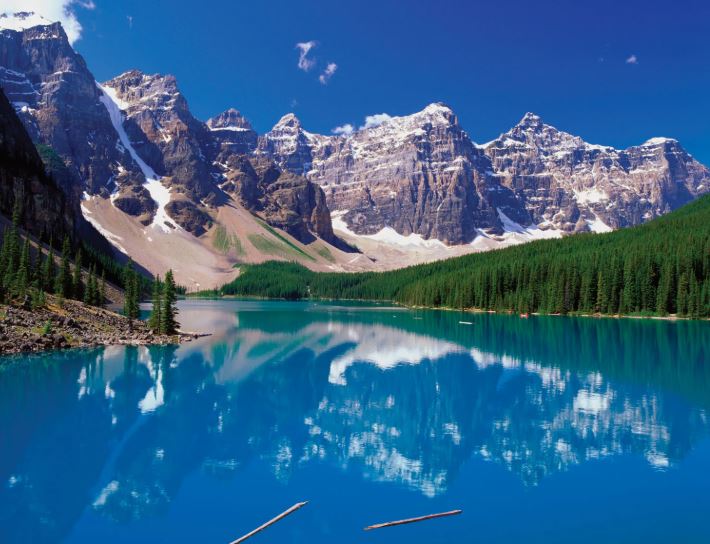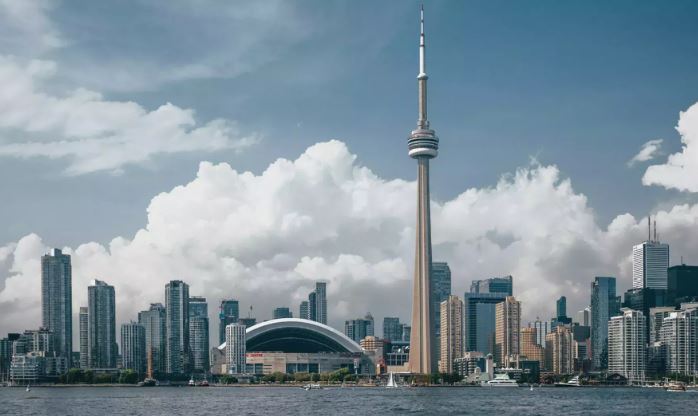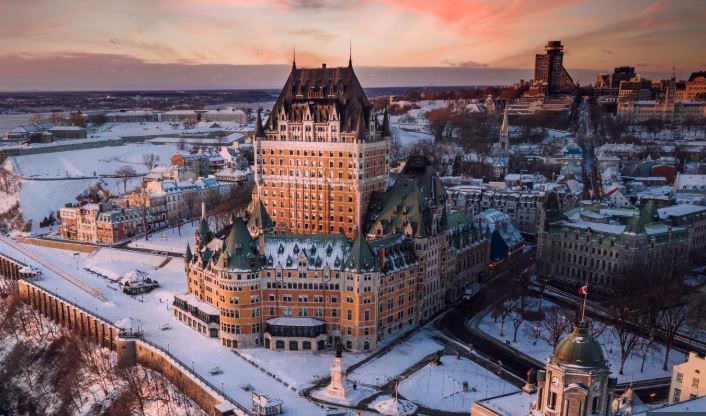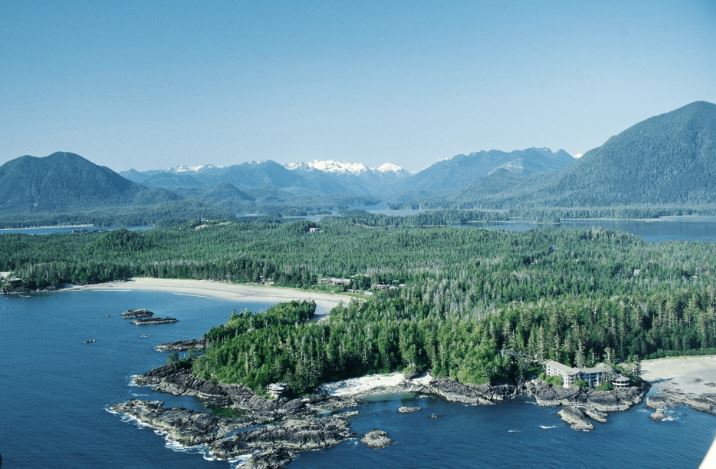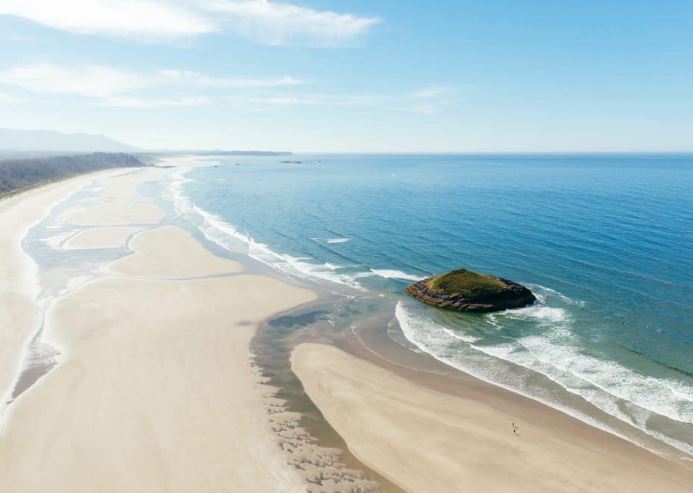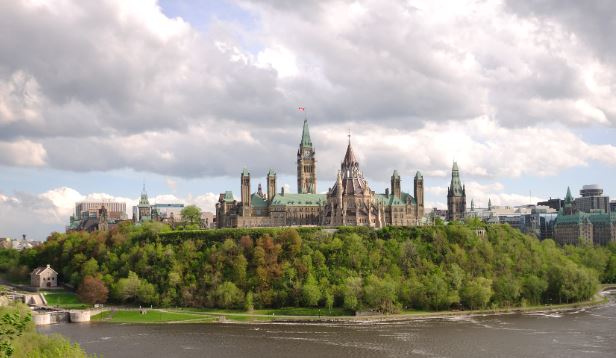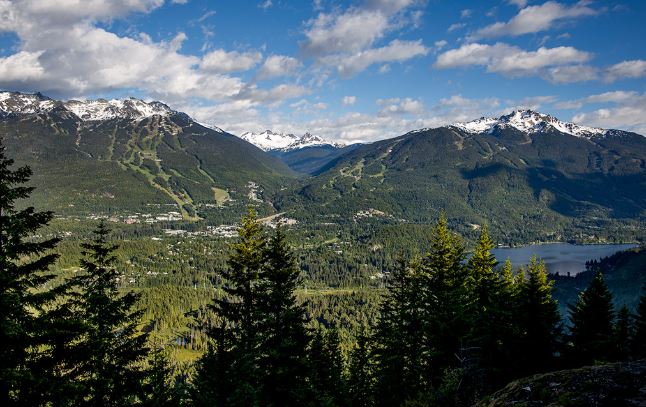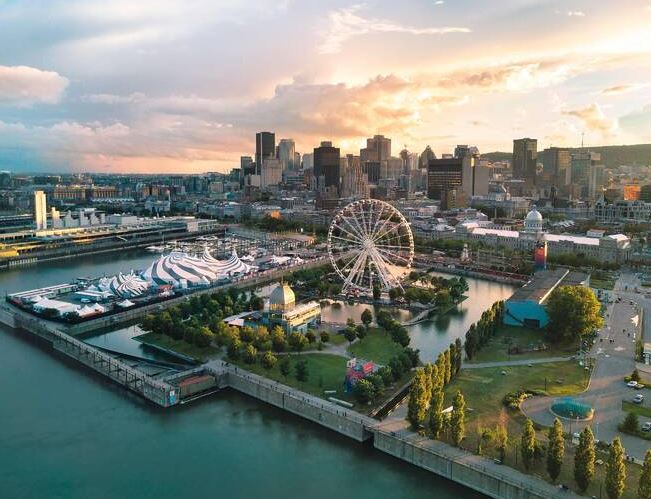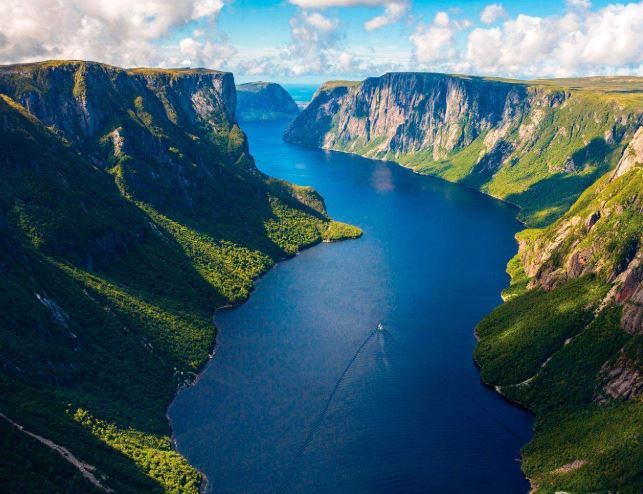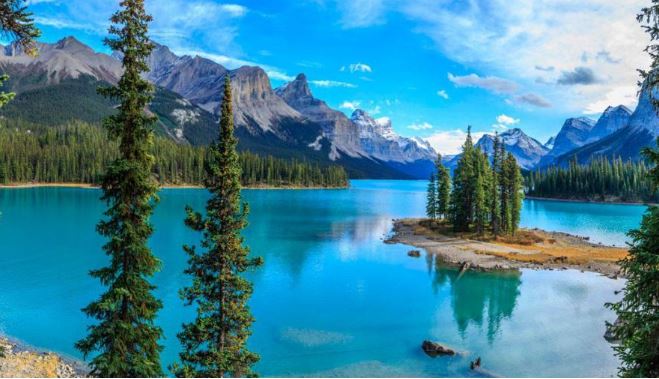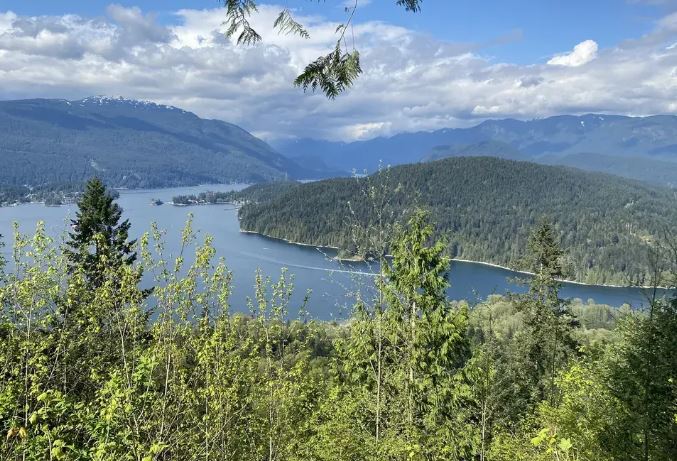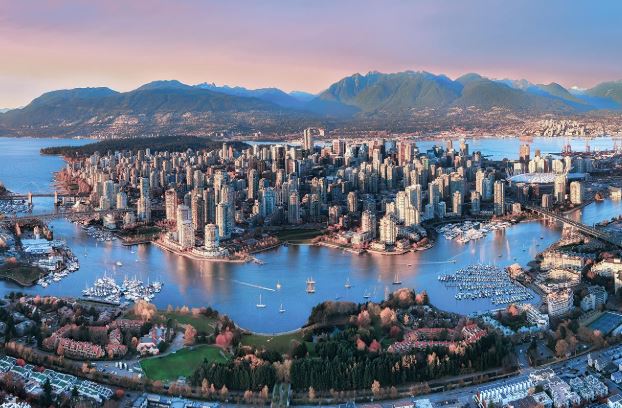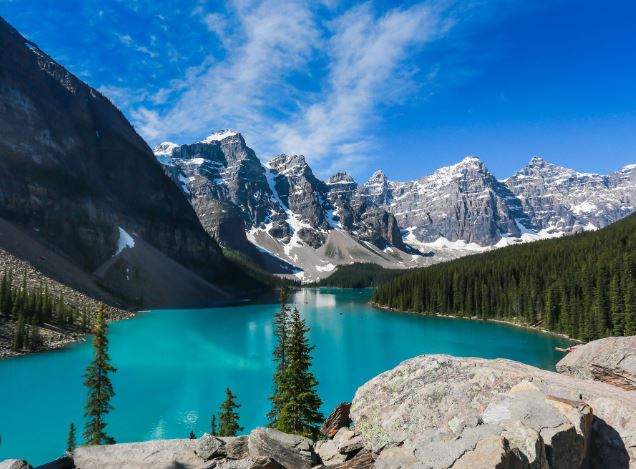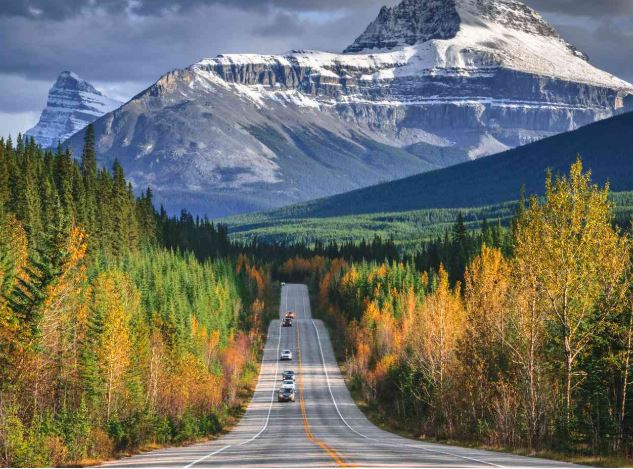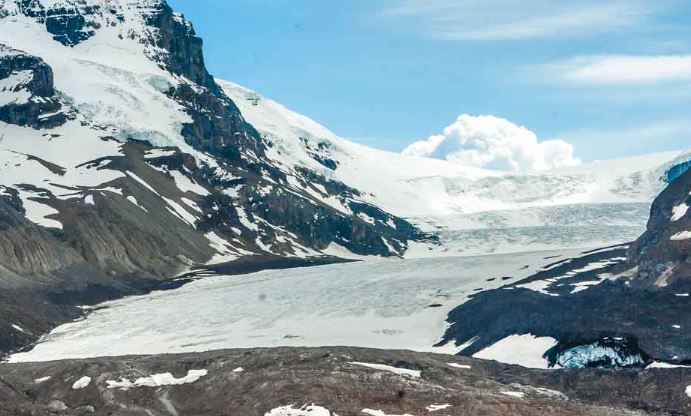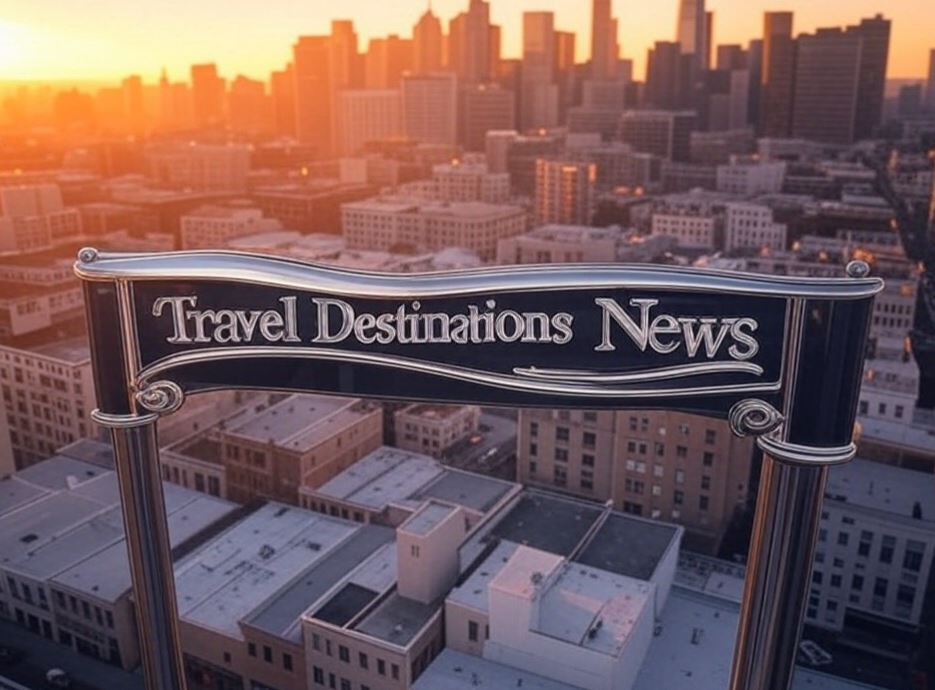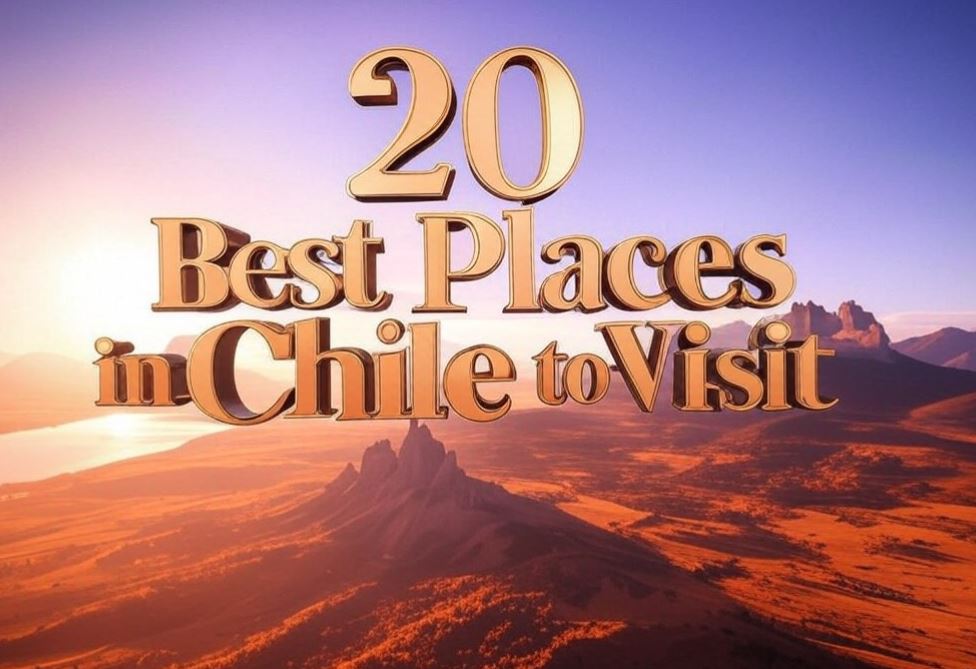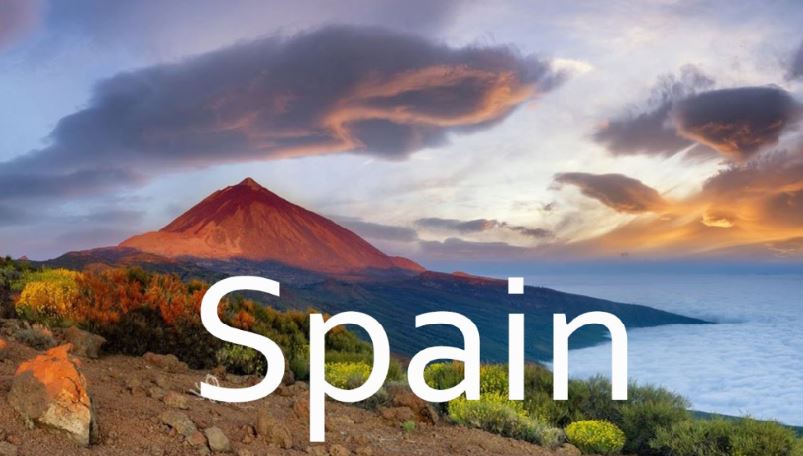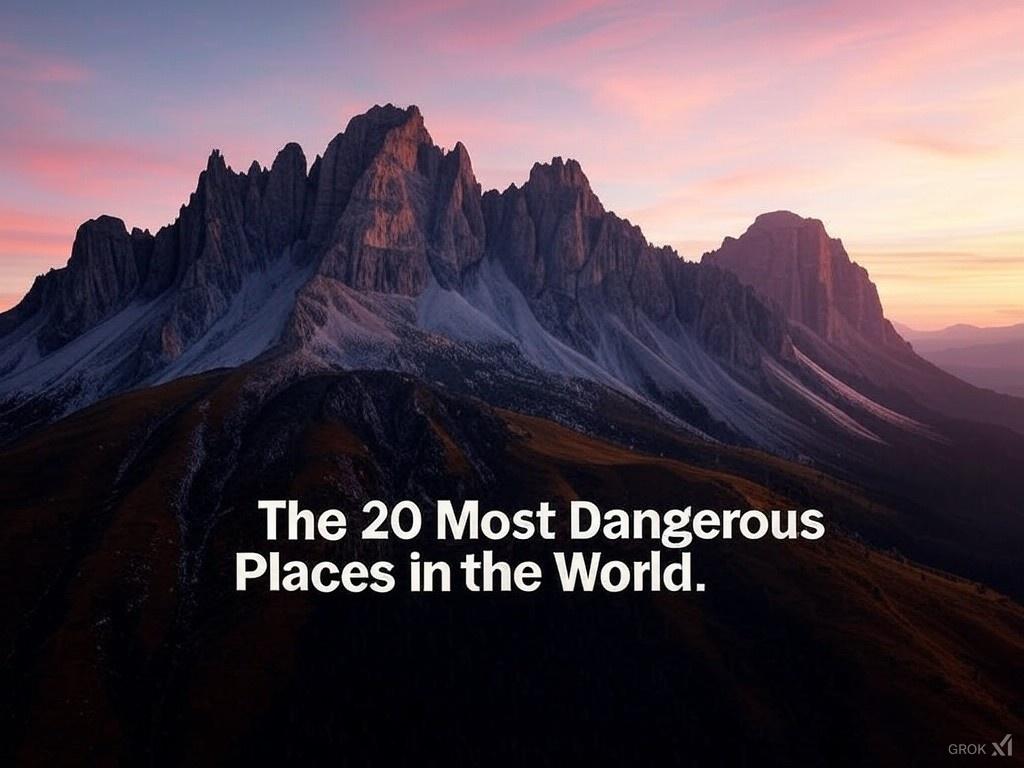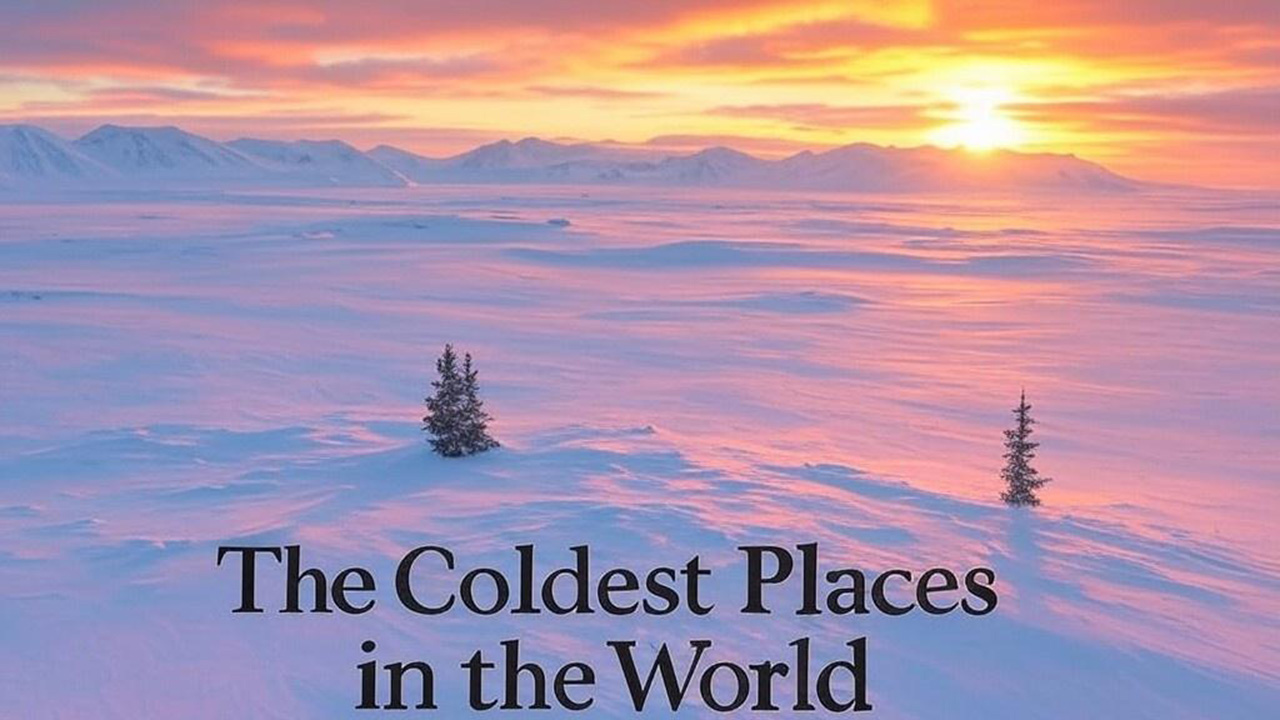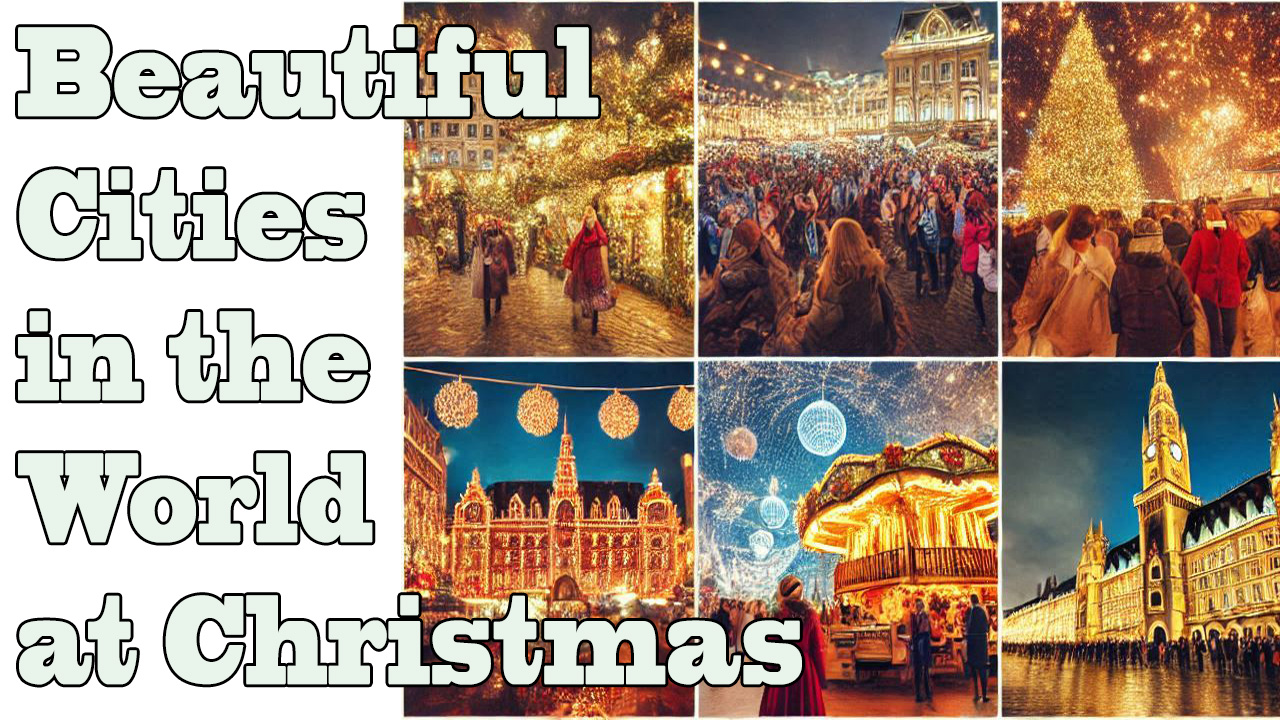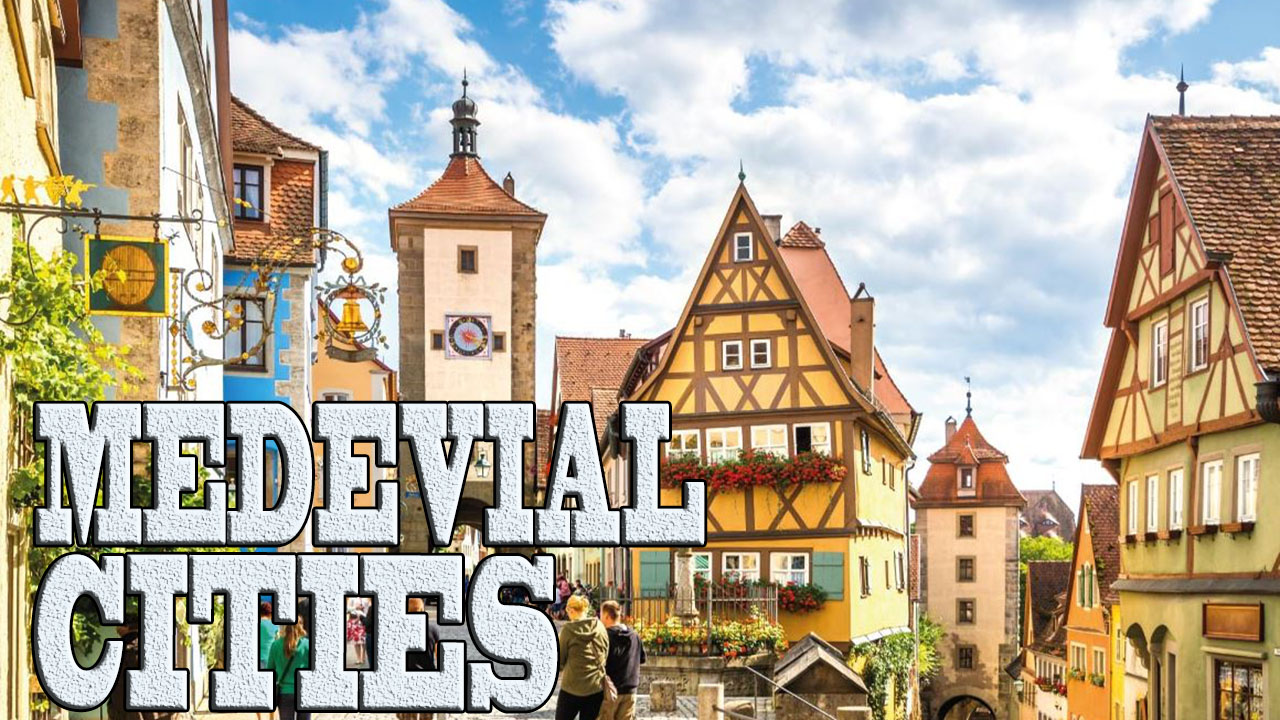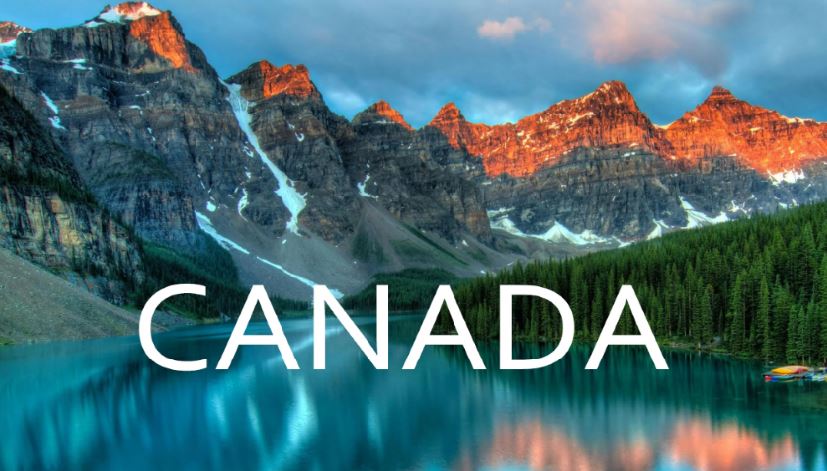
Today I bring you an epic journey through the most incredible places in Canada, a country that combines spectacular nature, vibrant cities and landscapes that will leave you breathless.
Imagine touring the majestic Niagara Falls, where the water falls from 51 meters high, or getting lost among the glaciers of Banff National Park, with its turquoise lakes that seem straight out of a postcard.
We will travel from modern Toronto with its iconic CN Tower, to the quiet and wild Rocky Mountains. We will discover Jasper National Park, explore Vancouver, and be amazed by the landscapes of the Canadian Arctic.
We will show you the must-see destinations that every traveler should know: crystal-clear lakes, cosmopolitan cities, spectacular national parks and unique experiences that only Canada can offer.
Niagara Falls, Ontario
Niagara Falls is a world-famous city located in southeastern Ontario, Canada, renowned for its breathtaking waterfalls.
Here are some key highlights:
General Information
- Population: 94,415 inhabitants (2021 census)
- Area: 212 sq. km
- Location: Niagara Peninsula, along the Niagara River
Waterfall Characteristics
- Horseshoe Falls measures 54 meters (177 feet) in height
- Carries nine times more water than its American counterpart
- Formed 12,500 years ago at the end of the Ice Age
Main Attractions
- Table Rock Welcome Centre
- Journey Behind the Falls
- Skylon Tower (160 meters high)
- Niagara SkyWheel
- Winter Festival of Lights
- Marineland
- Butterfly Conservatory
- Casinos: Niagara Casino and Niagara Fallsview Casino Resort
Tourism
- Receives 14 million visitors annually
- Considered Canada's #1 leisure destination
- Offers experiences like cruises, waterfall viewing, and theme parks
Unique Features
- Generates significant hydroelectric power
- Major honeymoon destination
- Recognized as one of North America's most iconic natural landmarks
Banff National Park: A Natural Wonder
Banff National Park stands as a breathtaking wilderness in Alberta, Canada, representing one of the world's most spectacular natural landscapes. Located in the heart of the Canadian Rocky Mountains, this park offers an unparalleled experience of pristine wilderness and extraordinary biodiversity.
Geographical Highlights
- Located in Alberta's Rocky Mountains
- Covers 6,641 square kilometers of mountainous terrain
- Includes diverse ecological zones: montane, subalpine, and alpine regions
- Features dramatic mountain ranges, glaciers, and turquoise lakes
Ecological Significance
The park hosts an incredible diversity of wildlife, including:
- Grizzly bears
- Wolves
- Elk
- Bighorn sheep
- Mountain lions
- Over 300 bird species
Outdoor Activities
- 1,600+ kilometers of hiking trails
- World-class skiing destinations
- Wildlife photography
- Mountain climbing
- Glacier exploration
- Hot springs
- Scenic drives
Iconic Locations
- Lake Louise
- Moraine Lake
- Johnston Canyon
- Banff Gondola
- Columbia Icefield
Tourism
- 4 million annual visitors
- Generates significant economic activity
- Supports local tourism infrastructure
- Recognized globally as a premier natural destination
Toronto's CN Tower
The CN Tower stands as a remarkable architectural marvel and telecommunications hub in the heart of Toronto, Ontario, Canada.
Rising to an impressive height of 553.3 meters (1,815 feet), it was the world's tallest freestanding structure from 1975 to 2007.
Historcial Background
Constructed by Canadian National Railway, the tower was completed in 1976 after a 40-month construction process. It was designed to solve telecommunications challenges caused by Toronto's rapidly growing skyline, providing unobstructed television and radio signals.
Visitor Attractions
The tower offers multiple exciting experiences for visitors:
- Observation Decks: Multiple levels providing panoramic views of Toronto
- Glass Floor: A thrilling transparent floor 342 meters above ground
- SkyPod: One of the world's highest public observation platforms at 457 meters
- EdgeWalk: A hands-free outdoor walking experience 356 meters high
- 360 Restaurant: A revolving restaurant offering gourmet dining with spectacular city views
Technical Specifications
- Total Height: 553.3 meters
- Observation Levels: Located between 342-351 meters
- Antenna Height: 102 meters
- Owned by: Canada Lands Company
Significance
The CN Tower is not just a tourist attraction but a symbol of Toronto's architectural innovation and a crucial telecommunications center serving over 17 Canadian television and radio stations.
Quebec
Quebec is a remarkable province located in northeastern North America, representing a distinctive cultural and linguistic region within Canada.
As the largest Canadian province by area, it spans an impressive 1.5 million square kilometers, offering diverse landscapes and rich historical heritage.
Geographical Characteristics
- Largest Canadian province by land area
- Located in northeastern North America
- Bordered by Ontario, Newfoundland and Labrador, and New Brunswick
- Shares coastal borders with Nunavut
- Traversed by the magnificent St. Lawrence River
Cultural Identity
Quebec is renowned for its strong French-speaking culture, being the only North American region with a French-speaking majority. The province has a unique cultural identity shaped by:
- French linguistic heritage
- Rich historical background
- Distinct social and political traditions
- Strong commitment to cultural preservation
Population and Demographics
- Second-largest Canadian province by population
- Approximately 8.2 million inhabitants
- Majority concentrated in the St. Lawrence River valley
- Includes major cities like Montreal and Quebec City
- Welcomes 30,000-50,000 immigrants annually
Economic Strengths
- Robust economy based on:
- Skilled workforce
- Natural resources
- Adaptability to economic changes
- Significant water resources
- Over one million lakes and rivers
Historical Significance
- Founded in 1608 by Samuel de Champlain
- Formerly a French colony
- Transformed by the Quiet Revolution in the 1960s
- Transitioned from a highly religious to a secular society
Vancouver Island
Vancouver Island is a remarkable geographical marvel located off the southwestern coast of British Columbia, Canada. Stretching 460 kilometers from Victoria in the south to Cape Scott in the north, it represents one of North America's most diverse and captivating landscapes.
Geographical Characteristics
- Largest island on the West Coast of North America
- Total area of 32,134 square kilometers
- Width ranges approximately 100 kilometers
- Topography includes coastal plains, mountains, and dense forests
Climate
The island boasts an exceptionally mild climate, unique in Canada:
- Average yearly temperature around 10°C
- Mediterranean-like conditions in southeastern regions
- Warm, dry summers
- Mild winters with rare freezing temperatures
- Diverse microclimates influenced by coastal and mountain geography
Ecological Diversity
Vancouver Island offers extraordinary natural environments:
- Ancient rainforests
- Snowcapped mountain ranges
- Untamed Pacific coastlines
- Rich marine and terrestrial ecosystems
- Home to diverse wildlife including marine mammals
Key Regions and Cities
- Victoria: Provincial capital
- Nanaimo
- Campbell River
- Port Alberni
- Duncan
Economic Significance
Primary industries include:
- Fishing
- Forestry
- Agriculture
- Tourism
- Technology
- Education
Tofino's Beaches
Tofino, located on Vancouver Island's west coast, boasts some of the most spectacular beaches in British Columbia. This small coastal town offers a diverse range of beach experiences, from world-class surfing spots to serene sandy shores perfect for relaxation.
Beach Highlights
A 2.7-kilometer stretch of pristine sandy coastline, Chesterman Beach is Tofino's most popular beach. Recognized globally as one of the top beaches, it offers stunning views, excellent surfing conditions, and opportunities to explore marine life during low tide.
Cox Bay Beach
Known as the epicenter of Tofino's surf culture, Cox Bay Beach hosts numerous surf competitions. Its crescent-shaped shoreline provides consistent waves and beautiful tide pools, making it a favorite among surfers and nature enthusiasts.
Tonquin Beach
Located within walking distance of downtown Tofino, this quarter-kilometer beach offers a unique experience. Accessible via a scenic rainforest trail, it provides breathtaking views of Wickaninnish Island and stunning sunset vistas.
Beach Activities
Visitors can enjoy a wide range of activities:
- Surfing
- Kayaking
- Storm watching
- Wildlife viewing
- Sunset photography
- Beach walking
- Tide pool exploration
Unique Features
Tofino's beaches are part of the Pacific Rim National Park, offering:
- Diverse ecosystems
- Lush rainforest backgrounds
- Opportunities for wildlife encounters
- Pristine, unspoiled natural environments
Ottawa's Parliament Hill
Parliament Hill stands as the heart of Canada's federal government, a stunning architectural complex located in downtown Ottawa. Perched on a limestone outcrop overlooking the Ottawa River, this nine-hectare site represents the symbolic center of Canadian democracy.
Historical Significance
Established after Queen Victoria chose Ottawa as the capital in 1857, Parliament Hill transformed from a military base to a magnificent governmental precinct. The site officially began construction in 1859, with the original Gothic Revival buildings completed by 1866.
Architectural Highlights
The complex features three primary buildings:
- Centre Block: Housing the Senate and Commons chambers
- East Block: Administrative offices
- West Block: Temporary seat of the House of Commons
Characterized by Gothic Revival architecture, the buildings showcase intricate limestone details, pointed arches, and elaborate stone carvings that reflect Victorian architectural ideals.
Key Features
- Peace Tower: A prominent landmark symbolizing Canadian resilience
- Library of Parliament: The only original structure surviving a major 1916 fire
- Centennial Flame: Added in 1967 to commemorate Canada's 100th anniversary
- Open grounds allowing public gatherings and celebrations
Visitor Experience
Attracting approximately three million visitors annually, Parliament Hill offers:
- Free guided tours
- Historical exhibitions
- Public events
- Stunning views of Ottawa's urban landscape
Whistler, British Columbia
Nestled in the stunning Coast Mountains of British Columbia, Whistler is a world-renowned resort municipality located approximately 125 kilometers north of Vancouver. This picturesque destination offers an extraordinary blend of natural beauty and outdoor adventure.
Geographical Highlights
- Located in the southern Pacific Ranges of the Coast Mountains
- Situated in the Sea to Sky Corridor
- Elevation ranges from 653 to 1,860 meters
- Permanent population of approximately 14,000 residents
Seasonal Activities
- Winter
- World-class skiing and snowboarding
- 8,171 acres of skiable terrain
- Over 200 marked runs
- 16 alpine bowls
- 3 glaciers
- Average annual snowfall of 11.92 meters
- Summer
- Mountain biking
- Hiking
- Golfing
- Fishing
- Trail running
- Outdoor yoga
Olympic Legacy
Whistler was the host mountain resort for the 2010 Winter Olympics and Paralympic Games, showcasing its world-class winter sports facilities.
Climate
- Four-season mountain climate
- Moderate winter temperatures
- Warm, dry summers
- Average summer high temperatures around 23°C
- Average winter temperatures around -5°C
Old Montreal
Old Montreal (Vieux-Montréal) represents a captivating historic district that transports visitors through centuries of Canadian urban heritage. Located in the southeastern part of Montreal, this neighborhood offers an extraordinary journey through time, preserving architectural and cultural elements from the 17th to 19th centuries.
Historical Significance
Founded in 1642 as Fort Ville-Marie, Old Montreal emerged as the original settlement of the city. The neighborhood maintains its original charm through meticulously preserved cobblestone streets, historic buildings, and architectural landmarks that reflect both French and British influences.
Architectural Highlights
The district boasts remarkable structures including:
- Notre-Dame Basilica: A stunning Gothic Revival masterpiece
- Bonsecours Market: A neoclassical architectural gem
- Montreal City Hall
- Numerous preserved colonial mansions
- Historic churches and seminaries
Cultural Experience
Old Montreal offers visitors:
- Numerous museums
- Art galleries
- Performance spaces
- Charming public squares
- Diverse dining experiences
- Boutique shopping
- Street performances during summer months
Unique Characteristics
- Cobblestone streets
- Horse-drawn carriages
- Blend of historical preservation and modern attractions
- Riverside location with stunning Saint Lawrence River views
Gros Morne National Park
Gros Morne National Park, located on the west coast of Newfoundland, Canada, is a UNESCO World Heritage Site renowned for its exceptional geological features and stunning landscapes. Covering an area of 1,805 square kilometers, the park offers visitors a unique glimpse into the Earth's history and the process of continental drift.
Geological Significance
The park showcases rare exposed oceanic crust and mantle rock, providing visible evidence of plate tectonics. This geological marvel includes:
- Ancient sea floor
- Preserved ocean avalanches
- Ordovician sedimentary rocks
- Precambrian granite and gneiss
- Palaeozoic igneous rocks
Landscape Features
Gros Morne's diverse terrain includes:
- Freshwater fjords
- Glacier-scoured headlands
- Coastal lowlands
- Alpine plateaus
- Sheer cliffs and waterfalls
- Pristine lakes
Activities and Attractions
Visitors can enjoy various outdoor activities:
- Hiking and walking trails
- Boat tours through fjords
- Camping
- Wildlife viewing
- Cultural experiences in nearby towns
Visitor Information
The park recently opened a new $8.9 million visitor center in Rocky Harbour, offering:
- Enhanced accessibility
- Interpretive designs featuring Mi'kmaq language
- LEED Silver certification
- EV charging stations
- Expanded parking for RVs and trailers
Jasper National Park
Jasper National Park stands as the largest national park in the Canadian Rocky Mountains, located in western Alberta. Spanning an impressive 11,228 square kilometers, this UNESCO World Heritage Site represents one of Canada's most extraordinary wilderness destinations.
Geographical Highlights
- Located in Alberta, Canada
- Situated north of Banff National Park
- Part of the Canadian Rocky Mountains
- Encompasses diverse terrain including mountains, valleys, glaciers, and forests
Ecological Significance
The park hosts an incredible diversity of wildlife, including:
- Grizzly bears
- Moose
- Elk
- Bighorn sheep
- Wolves
- Numerous bird species
Unique Features
- Second-largest Dark Sky Preserve globally
- Home to Columbia Icefield
- Contains pristine ecosystems
- Remarkable geological formations
- Extensive network of hiking trails
Visitor Experiences
Visitors can enjoy multiple activities:
- Summer hiking and mountain biking
- Winter skiing and snowshoeing
- Wildlife viewing
- Glacier exploration
- Photography
- Scenic drives
Historical Context
- Established as Jasper Forest Park in 1907
- Became a national park in 1930
- Designated UNESCO World Heritage Site in 1984
Burnaby Mountain Park
Burnaby Mountain Park is a stunning conservation area located in Burnaby, British Columbia, offering breathtaking views of Vancouver and the surrounding landscape. Situated at an elevation of 370 meters, this mountain park provides visitors with a unique blend of natural beauty and recreational opportunities.
Geographical Features
- Located 20 minutes east of Vancouver
- Overlooks Burrard Inlet and Vancouver skyline
- Covers approximately 576 hectares
- Home to Simon Fraser University campus
Natural Environment
The park boasts a rich ecosystem featuring:
- Dense west coast forests
- Deciduous and coniferous trees
- Diverse wildlife including:
- Black tail deer
- Coyotes
- Bald eagles
- Occasional black bears and cougars
Recreational Activities
Visitors can enjoy multiple activities:
- Hiking on 28 kilometers of trails
- Mountain biking
- Photography
- Picnicking
- Sunset viewing
- Seasonal activities like tobogganing in winter
Unique Attractions
- Kami Mintara sculptures (Playground of the Gods)
- Centennial Rose Garden
- Mountain Air Bike Skills Park
- Panoramic viewpoints
- Mintara Restaurant
Vancouver
Vancouver stands as a vibrant coastal city located in southwestern British Columbia, Canada. Nestled between the Pacific Ocean and the stunning Coast Mountains, this metropolitan area represents one of Canada's most dynamic and diverse urban centers.
Geographical Highlights
- Located on the Burrard Peninsula
- Bordered by English Bay and Burrard Inlet
- Covers 114 square kilometers
- Population of approximately 662,248 (2021)
- Third largest metropolitan area in Canada
Cultural Diversity
Vancouver is renowned for its multicultural landscape, with a rich history of Indigenous peoples and immigrant communities. The city has been home to the Coast Salish Nations for thousands of years and continues to celebrate its cultural diversity.
Natural Beauty
The city offers an extraordinary blend of urban sophistication and natural wonder:
- Stanley Park: One of North America's largest urban parks
- Surrounding mountains and ocean views
- Mild oceanic climate
- Proximity to rainforests and beaches
Urban Characteristics
Key neighborhoods include:
- Downtown
- Gastown
- Chinatown
- West End
- Yaletown
Economic Significance
Vancouver serves as a major Pacific Rim port and business hub, with strong connections to Asia and international trade. The city has transformed from a small sawmilling settlement to a global economic center.
Rocky Mountains
The Rocky Mountains represent one of the most spectacular mountain ranges in North America, stretching approximately 3,000 miles from British Columbia, Canada, to New Mexico in the United States. This extraordinary mountain system forms the backbone of the continent, creating a dramatic landscape that spans multiple provinces and states.
Lakes, Glaciers, and Points of Interest
- Notable Lakes
- Bear Lake: Most accessible lake in the park
- Nymph Lake: Part of a popular hiking route
- Dream Lake: Scenic alpine lake
- Emerald Lake: Located at 2,890 meters, with emerald-colored waters
- Bow Lake: Beautiful glacial lake
- Hector Lake: Glacial waters accessible from the road
- Lake Irene: Crystal-clear reflective lake
- Glaciers
- Athabasca Glacier: Part of the Columbia Icefield
- Bow Glacier: Located near Bow Lake
- Small cirque glaciers throughout Rocky Mountain National Park
- Points of Interest
- Trail Ridge Road: Highest continuous paved road in a U.S. national park
- Alpine Ridge Trail: Located at 3,659 meters with 360-degree views
- Alpine Visitor Center: Highest visitor center in a U.S. national park
- Alberta Falls
- Ute Trail: Ancient Native American trail through tundra
- Holzwarth Historic Site: Early 20th-century ranch
- Rock Cut and Lava Cliffs viewpoints
Geographical Characteristics
- Extends over 4,800 kilometers
- Includes over 100 separate mountain ranges
- Divided into four primary sections:
- Canadian Rockies
- Northern Rockies
- Middle Rockies
- Southern Rockies
Geological Features
The Rocky Mountains are characterized by:
- Peaks exceeding 13,000 feet
- Dramatic vertical relief
- Continental Divide
- Ancient geological formations
- Diverse rock compositions
Ecological Significance
The mountain range hosts multiple ecological zones:
- Montane regions
- Subalpine forests
- Alpine tundra
- Diverse wildlife habitats
Notable Peaks
- Highest peak: Mount Elbert (Colorado) at 4,401 meters
- Highest Canadian peak: Mount Robson at 3,954 meters
Icefields Parkway
The Icefields Parkway is an extraordinary scenic highway stretching 232 kilometers through the heart of the Canadian Rockies. Connecting Lake Louise in Banff National Park to Jasper, this remarkable route offers one of the most breathtaking drives in the world.
Geographical Highlights
- Located entirely within Alberta, Canada
- Winds through Banff and Jasper National Parks
- Follows Alberta Highway 93
- Traverses the continental divide
Natural Wonders
The parkway showcases an incredible landscape featuring:
- Over 100 visible glaciers
- Turquoise alpine lakes
- Snow-capped mountain peaks
- Cascading waterfalls
- Diverse wildlife habitats
Key Attractions
- Athabasca Glacier
- Columbia Icefield
- Peyto Lake
- Sunwapta Falls
- Glacier Skywalk
- Weeping Wall
- Multiple mountain viewpoints
Historical Context
Constructed in the 1940s, the Icefields Parkway was developed to connect national parks and showcase the region's natural beauty. It has since become a UNESCO World Heritage Site destination.
Athabasca Glacier
Athabasca Glacier is one of the most remarkable natural wonders located in the Canadian Rockies. Situated within the Columbia Icefield, this extraordinary glacier represents a stunning example of North America's glacial landscapes.
Geological Characteristics
- Located in Jasper National Park, Alberta
- Part of the Columbia Icefield
- Covers approximately 6 square kilometers
- Length of 6 kilometers
- Thickness ranges between 90-300 meters
Environmental Significance
The glacier is experiencing significant environmental changes, currently receding at a rate of about 5 meters per year. Over the past 125 years, it has lost more than half of its original volume, highlighting the impact of climate transformation.
Visitor Experience
- Most visited glacier in North America
- Accessible via the Icefields Parkway
- Guided tours available using specialized snow coaches
- Visitors can approach the glacier's edge
- Located near the Columbia Icefield Glacier Discovery Centre
Unique Features
- Formed over 200,000 years ago
- Receives up to seven meters of snowfall annually
- Part of a complex mountain ecosystem
- Contributes to multiple water drainage systems
